Don’t understand basic strength of materials interview questions?
You won’t get the job.
Knowing basic strength of materials is necessary for both for a job interview and for general knowledge as an engineer.
You will not provide value if you don’t understand the basics of strength of materials.
Engineering classes go very in depth, but in reality you only need to know the basics.
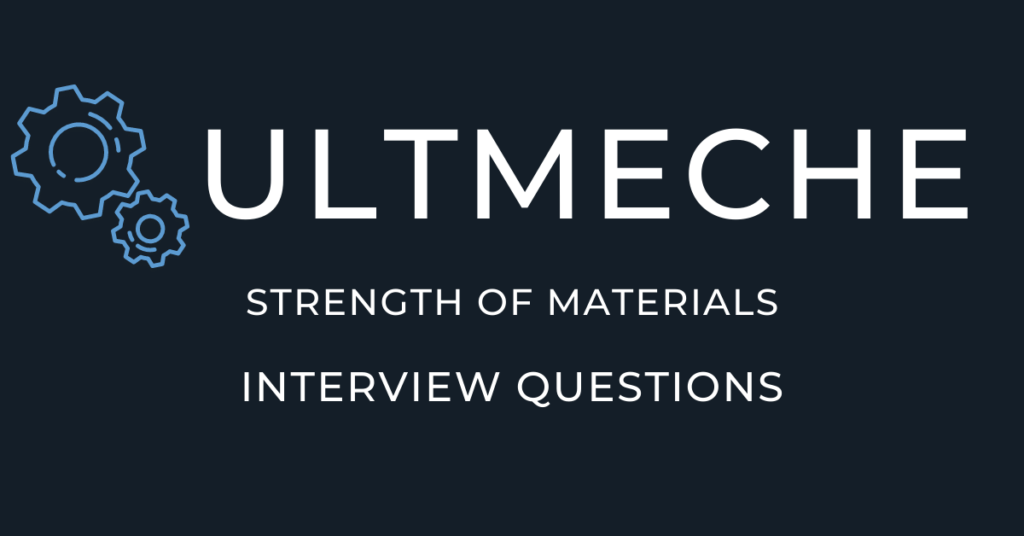
The following questions are basic concepts that you will go over in a strength of materials class.
Make sure you know these questions both so that you are ready for an interview and you also will need to know these terms if you want to be a good mechanical engineer.
Book a technical mock interview with Kazu to 10X chances of landing the engineering job.
What is the definition of Stress?
Stress is defined as the physical value of force divided by the area subject to the force.
Stress = Force/Area, denoted in units such as psi or Pascals
Check out for a more detail: What is Stress in Engineering?
What is the definition of Strain?
Strain is defined as the elongation of an object divided by the total length.
What is yield strength?
Yield strength is the point where a material will stop linearly deforming, and start non-linear deformation.
What is ultimate tensile strength?
Ultimate tensile strength is the highest stress a material can withstand before failure.
What are allowable stresses?
Allowable stresses define the limits of the stress the materials can be subject too. If the stress exceeds the allowable, the part will not meet its failure criteria and be at risk for failure.
What is shear stress?
The shear stress of an object is a stress subject to an object’s shear plane.
Refer to the image below.
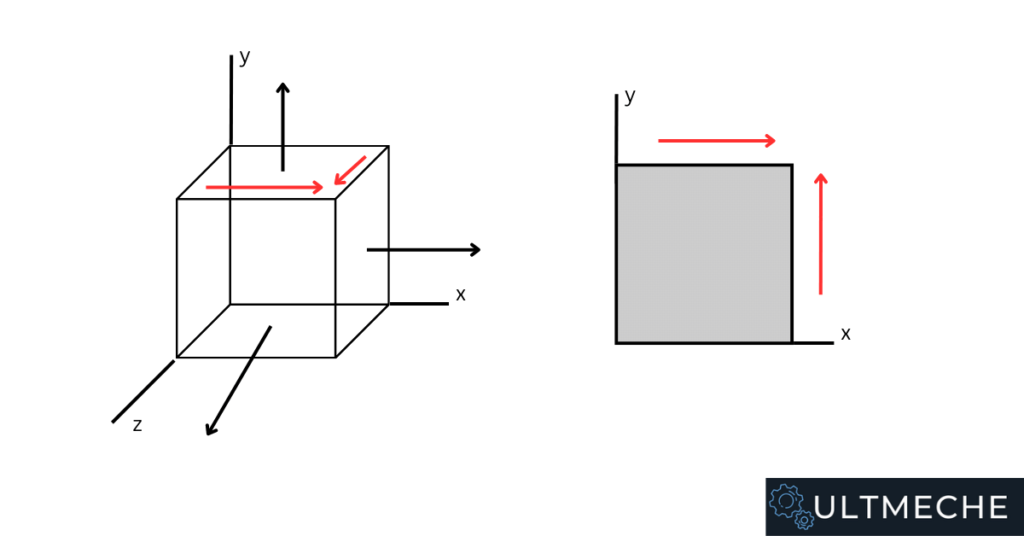
The shear stress component is parallel to the axis of the second subscript, when we look at the following three dimensional figure.
See the lines in red correspond with what shear stress is visually.
Book a technical mock interview with Kazu to 10X chances of landing the engineering job.
What is torque?
Torque is defined as the cross product between the radius and the force applied. Applications of torque include tightening bolts, engines, and opening door handles.
What is inertia?
The inertia of an object is an object’s ability to resist change in its velocity. In a strength of materials context, rotational inertia is often considered.
What is a bending moment?
A bending moment occurs at a point X when a force is acted upon a certain distance L from X.
See the example of a bending moment for a cantilever beam below.
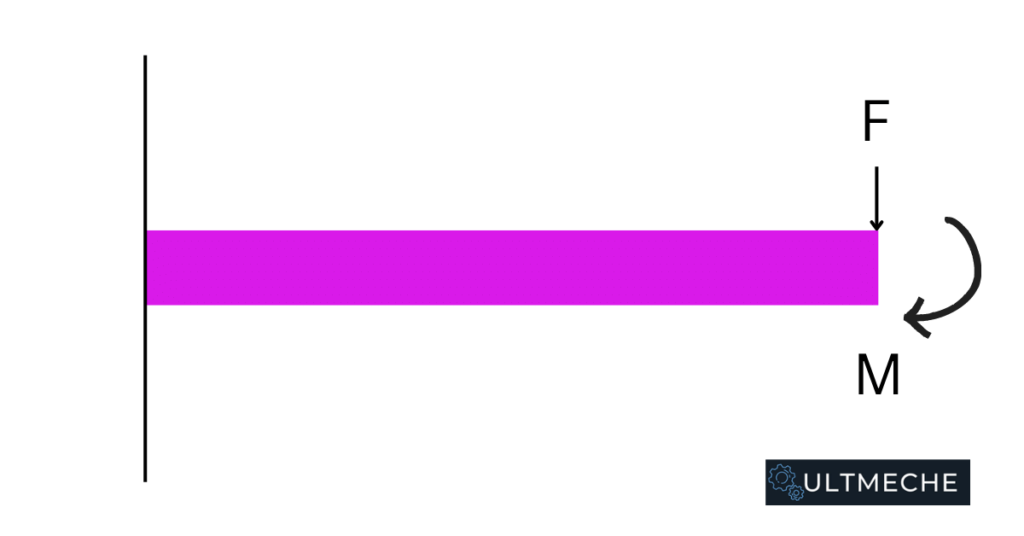
How do you know bolts are torqued properly in the industry?
Engineering companies will have processes and procedures set for operations such as these.
They will specify to torque fasteners to a certain value so that they can achieve a proper preload to withstand operating conditions and to create a secure joint.
In the industry, work orders are written for technicians to perform operations such as torquing. As a result, it is easy to check if bolts are torqued properly by looking at these work orders.
Another quick way to verify that bolts are torqued in the industry are if they have some type of torque stripe or dykem film on them.
Torque stripe will be applied to bolts to visually show that they are complete in some engineering applications such as aerospace or defense.
What is engineering fatigue?
Engineering fatigue is the concept in which a component is subject to repeated cyclical stresses over a long period of life cycles. When parts are subject to these cyclical stresses, even though they are way below the yield or ultimate tensile strength of the material, they are subject to failure. This concept is known as engineering fatigue.
Why is fatigue so important?
Engineering fatigue is extremely important because even though parts are subject to stresses lower than their allowable limits, they will be subject to fatigue failures. This is where stress concentration factors, endurance limits, and the goodman diagram will come in when performing analysis on these parts.
What is an S-N curve?
An S-N curve shows the results for a fatigue strength test of a material, which is necessary to determine whether the material can handle the specific engineering application.
It’s common for an S-N curve to be graphed logarithmically due to the high number of cycles during testing.
Book a technical mock interview with Kazu to 10X chances of landing the engineering job.
What is a goodman diagram?
A modified goodman diagram shows the mean stress and plots it along the abscissa and all other components of stress which is going to be plotted on the origin.
The goodman diagram shows how a product will fail given a high number of cycles.
An easy way to interpret the goodman diagram is all stresses above the modified goodman line will indicate that the component has finite life, whereas the stresses underneath the modified goodman line indicate infinite life.
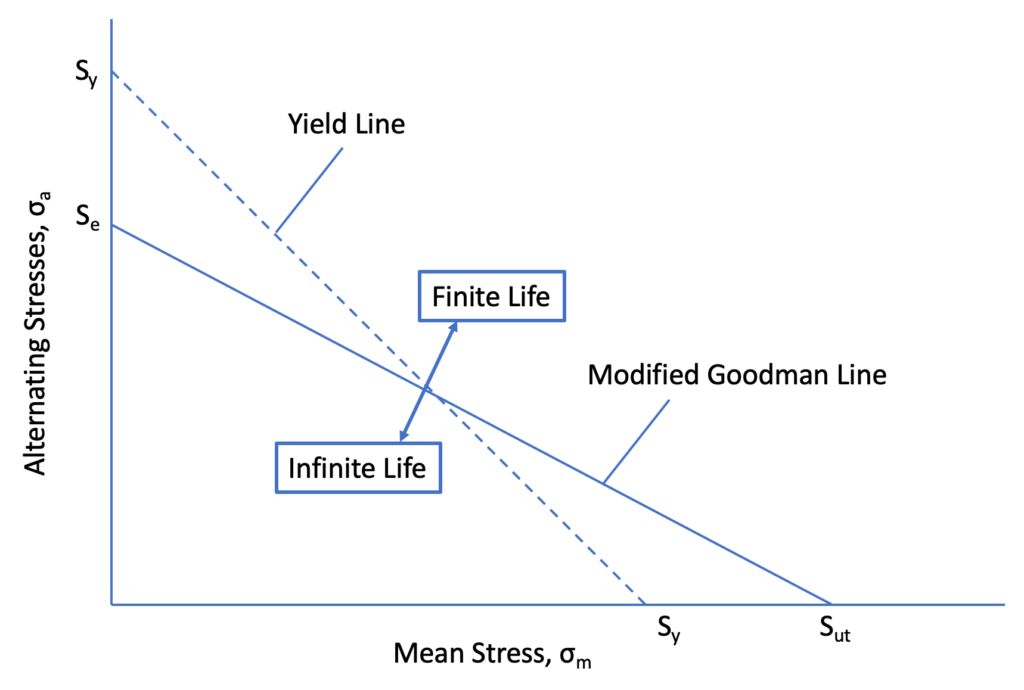
All stress values above the “modified goodman line” show that the part can only go for so long before it endures fatigue.
All stress values below the “modified goodman line” show that the part can go for infinite cycles, and as a result does not need to worry about fatigue failure.
Check this out so that you can learn more: Goodman Diagram
What is an endurance limit?
Endurance limit pertains to the value in which we see a “knee” occurring in an S-N curve for a fatigue test.
Beyond the endurance limit, the part will not fail given an infinite number of cycles.
What is fatigue strength?
Fatigue strength corresponds to a point on the S-N curve which is accompanied by the number of cycles N for a fatigue test.
What is Mohr’s Circle?
Mohr’s circle utilizes a graphical representation to calculate principle stresses, based off of normal and shear stresses.
Refer to the figure below for Mohr’s circle.
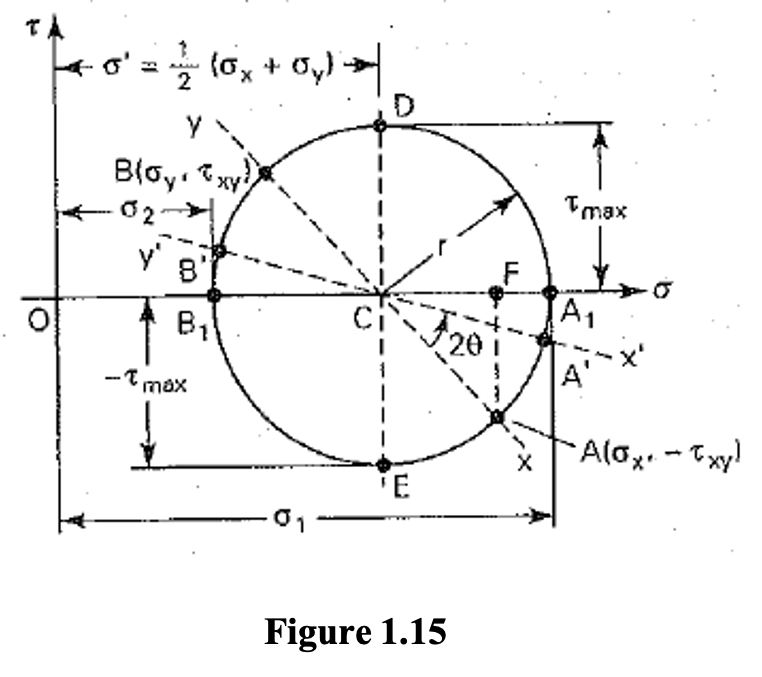
What are principal stresses?
Principal stresses represent the maximum or minimum normal stresses on a body.
The equation below calculates what principle stresses are mathematically.

What is stress concentration?
A stress concentration refers to a location in an object where the stress is greater than the surrounding region. Stress concentrations occur where there is interruption in the flow of stress caused by geometry. Features such as grooves, holes, corners, and fillets cause stress concentration.
Book a technical mock interview with Kazu to 10X chances of landing the engineering job.
What is Young’s Modulus?
Young’s modulus is defined by the stress divided by the strain of a material. The Young’s Modulus refers to how stiff the material is, commonly expressed in units of GPA (Giga pascals).
What is the difference between a brittle and ductile material?
Brittle materials have low strain to failure, whereas ductile materials have high strain to failure. The stress strain curves for brittle and ductile materials are both very different.
See: Stress Strain Curve
Explain the benefit of using aluminum over steel.
The great benefit that aluminum offers is its high strength to weight ratio. Although aluminum is not capable of handling very high stress applications, aluminum provides many solid use cases for jigs, fixtures, fit checks, mechanical tests, and other engineering applications.
Aluminum is relatively cheap, easy to procure, and easy to machine quickly for “one off” type jobs.
Explain why do we need to proof load components in engineering companies.
It is absolutely important to proof load components to ensure that they can withstand their operating loads.
For example, if a part, fixture, or assembly is rated for 100 kips, it will be common industry practice to proof to 1.5X the rated load.
So in this example, we’re going to be proof loading the respective part to 150 kips.
This verifies the engineering product integrity and we know that it is capable of operating conditions.
Closing Thoughts on Strength of Materials Interview Questions
Strength of materials is a very fundamental engineering class that will stay throughout your entire career as a mechanical engineer.
Want to learn how to write a good mechanical engineer resume and more about material engineering (a really good industry to go into if you want to utilize strength of material principles in your career)?
Check out: Entry Level Mechanical Engineering Resume and What is Material Engineering
Don’t forget to check out our career services as we provide resumes, cover letters, interviews, and LinkedIn optimization for those specializing in engineering careers.
Book a technical mock interview with Kazu to 10X chances of landing the engineering job.
Our mock interviews break up behavioral and technical step by step and as a result will prepare you for challenging interviews.
About the author

Kazuyoshi Fujimoto, PE
Founder | Engineering Career Coach | Principal Mechanical Engineer
Kazu oversees all of ultmeche’s engineering services. He provides consulting such as resume reviews, rewrites, mock interviews, and all services career related. Additionally, Kazu performs consulting work regarding Oil & Gas, Automotive, and Aerospace & Defense. Kazu is licensed as a professional engineer in the state of California and has 9+ years of experience in Oil & Gas, Automotive, and Aerospace & Defense.

3 thoughts on “Strength of Materials Interview Questions – Top 23”